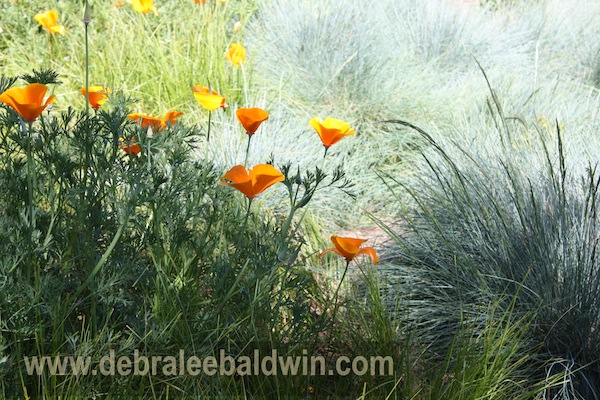
At this month’s Succulent Extravaganza, Sept. 28 and 29 at Succulent Gardens near San Francisco, I’ll be speaking about companion plants for succulents that vary from ground covers to trees. Many grow in my own garden near San Diego. Two examples are above: orange California poppies (an annual) and blue fescue, a perennial that is low-growing, mounding and truly blue. Like all ornamental grasses, it adds great texture to gardens.
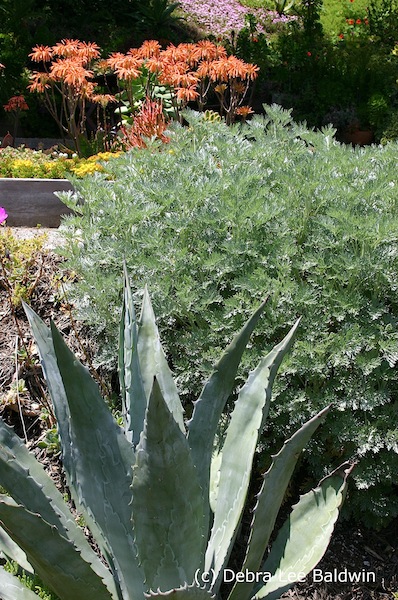
Speaking of texture, Artemisia ‘Powis Castle’ has finely cut leaves and shimmers with a silvery blue comparable to Agave americana, shown here in my garden. In bloom higher up the slope are aloes with orange flowers.
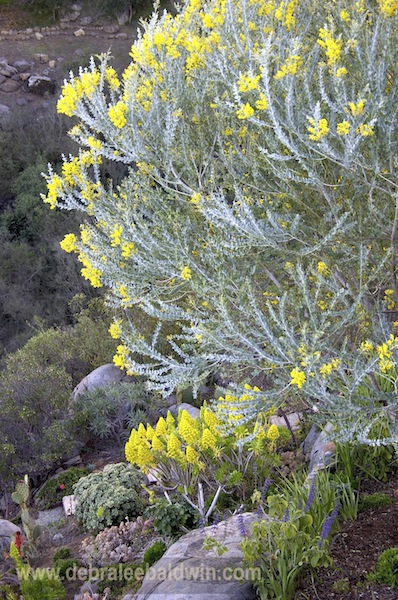
Knifeleaf acacia, so named for its rick-rack leaves, also lends great texture to a dry garden. It blooms with yellow puffball flowers in February, and grows into a shrublike, multitrunked tree.
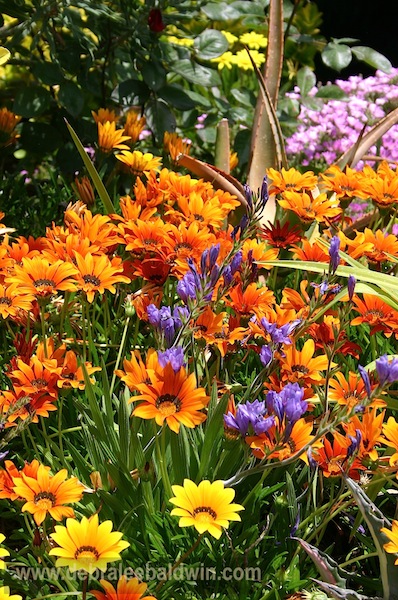
I’ve posted about African daisies (gazanias) before; these powerhouse perennials blast into bloom in early spring. Their vivid, hot-hued flowers are cheerful, easy-care and ongoing.
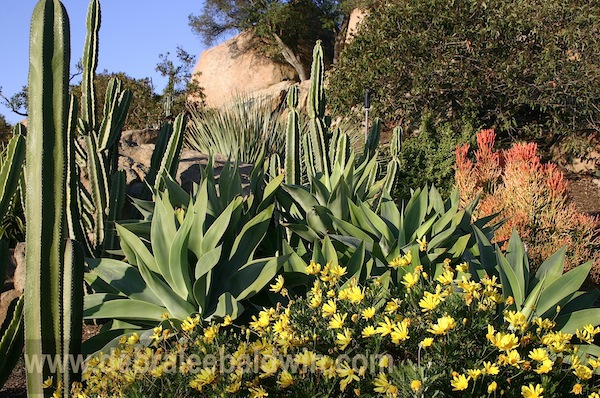
Speaking of daisies, I’m ashamed how badly I’ve treated Euryops pectinatus. I planted it in a neglected area of the garden in poor soil near a woefully underpowered irrigation riser. I can only imagine how much better it might look if I’d been nice to it.
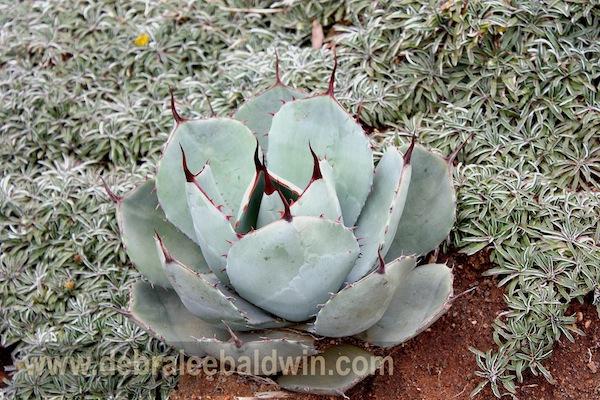
The groundcover dymondia is a great way to add access to a succulent garden. Succulents cannot be trod upon; dymondia can. Not only can you create pathways of dymondia, you can park your car on it. Here it’s snuggling up to Agave parryi ‘Truncata’.
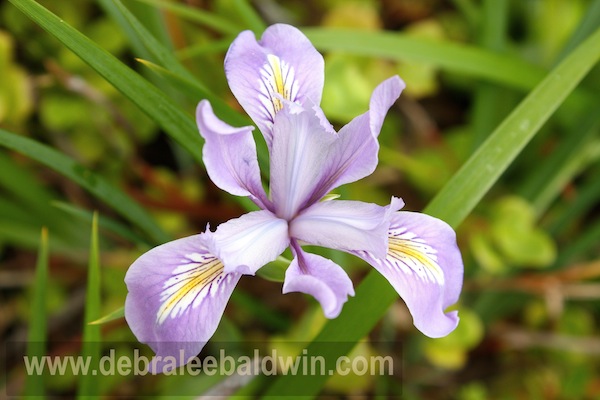
This is my favorite flower: Pacific Coast iris (Iris douglasiana). The petals are washed with color and detailed as though with a fine-point pen. These ephemeral blooms last but a day. The rest of the year, the leaves sort of sit there, a green clump of strappy foliage. I don’t mind; the flowers are worth it.
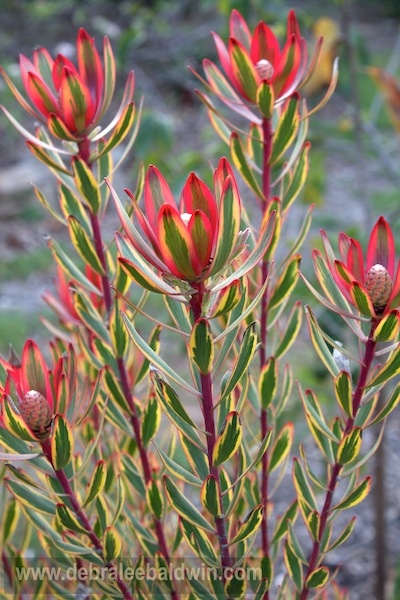
Leucadendron ‘Safari Sunset’, from Australia, is a colorful shrub from which you can harvest stems to enhance bouquets. Just don’t give the plant fertilizer with a high potassium content; leucadendrons and other proteaceae can’t handle it.

Statice, or sea lavender (limonium) grows great along the coast, where it will naturalize. Here it’s shown with blue senecio and barrel cacti.
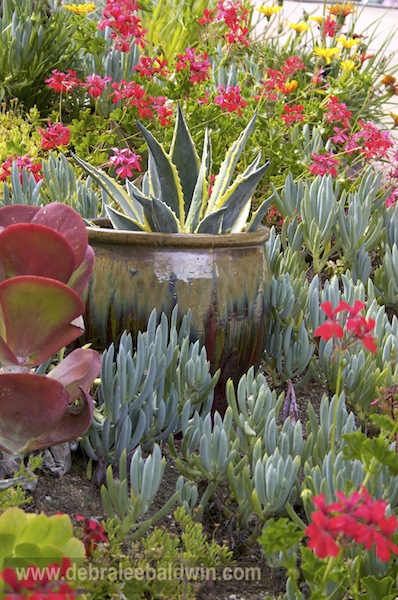
What could be simpler than ivy geraniums? These vining plants are drought-tolerant, colorful, and start easily from cuttings. A drawback is that they grow on the tips of ever-lengthening stems that look messy over time. Every other year or so, trim them back and start new plants from the cuttings.

Tradescantia is wonderful in container gardens and doesn’t do too badly in garden beds, either. It does look ratty after a few years and will need cutting back and replanting. But the color is worth it, don’t you agree?
So, have I included your favorites, or do you have a companion plant for succulents that I’ve overlooked? It needn’t be an in-ground plant; if you have something wonderful that grows great in containers, do tell!
My goal is to share the beauty of waterwise, easy-care succulents in gardens, containers and landscapes via blog posts, newsletters, public speaking and workshops, photos, videos, merchandise, and social media (Facebook and Pinterest). My books: Designing with Succulents, Succulent Container Gardens, and Succulents Simplified. www.debraleebaldwin.com
